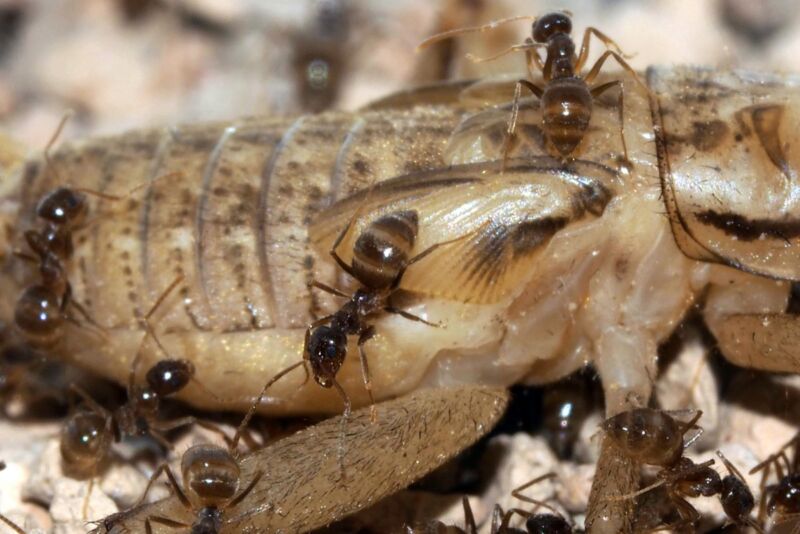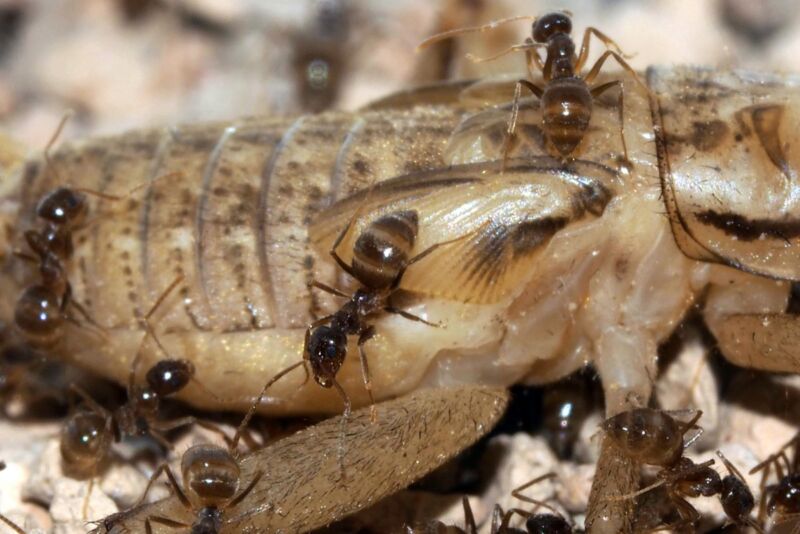
Enlarge / Tawny crazy ants (Nylanderia fulva) feeding on a cricket. (credit: Lawrence E. Gilbert)
Several years ago, staffers at Estero Llano Grande State Park in Weslaco, Texas, noticed a new type of invasive ant species. Tawny crazy ants were so aggressive that they were driving birds out of their nests and occasionally swarming over visitors who paused to sit awhile on a trail. Populations of other native species—like scorpions, snakes, tarantulas, and lizards—sharply declined, while rabbits were blinded by the ants’ venom.
That’s when University of Texas at Austin biologist Ed LeBrun got involved. “They had a crazy ant infestation, and it was apocalyptic—rivers of ants going up and down every tree,” he said. Crazy ants have since spread rapidly through every state on the Gulf Coast, with over 27 Texas counties reporting significant infestations. The usual ant-bait traps and over-the-counter pesticides have proven ineffective, so the EPA has approved the temporary restricted use of an anti-termite agent called fipronil. But a more targeted and less toxic control strategy would be preferable.
LeBrun has worked extensively on fire ants, another invasive species that has plagued the region. He has spent the last few years investigating potential sustainable control strategies based on crazy ants’ natural enemies in the wild. LeBrun and his colleagues have now discovered that a specific type of fungus can effectively wipe out crazy ant colonies while leaving other native species alone, according to a new paper published in the Proceedings of the National Academy of Sciences.





